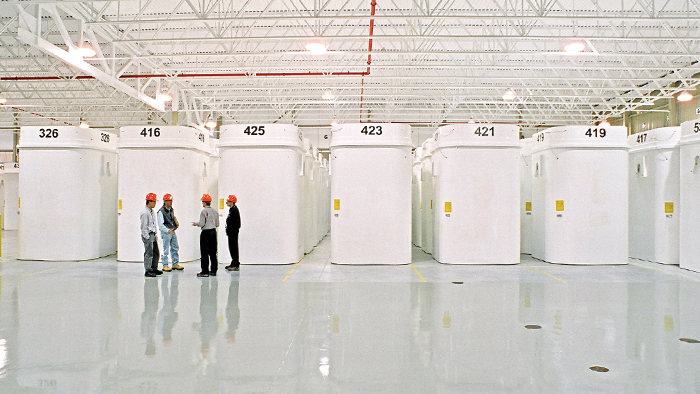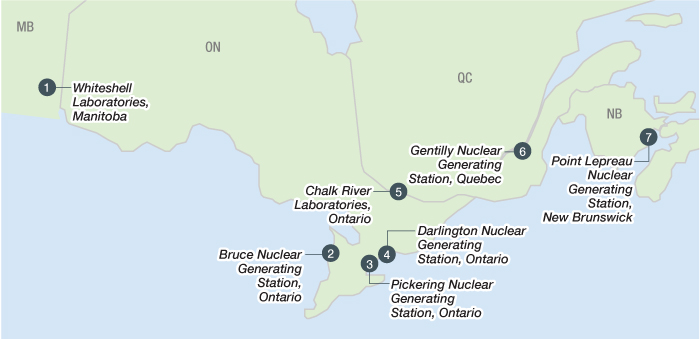How is it stored today?
When used nuclear fuel bundles are removed from a reactor, they are placed in a water-filled pool where their heat and radioactivity decrease. After seven to 10 years, the bundles are placed in dry storage containers, silos or vaults. Dry storage is a proven technology that has been in use around the world since the 1980s.
Overview
Dry storage containers are made of reinforced high-density concrete about 510 millimetres (20 inches) thick and are lined inside and outside with 12.7-millimetre-thick (half-inch) steel plate. The thickness of the concrete provides an effective barrier against radiation.
How is used nuclear fuel stored today in Canada?
The dry storage containers have a minimum design life of 50 years. They are actively monitored, and studies indicate that with ongoing maintenance and inspections these containers can be safely used for much longer periods of time. After 50 years, the life of the container could be extended, or the used fuel could be repackaged. These decisions will depend on a number of factors, including the timeline for implementing Canada’s plan for the long-term management of used nuclear fuel.
Watch now
Although the used fuel's radioactivity decreases with time, chemical toxicity persists. The used fuel will remain a potential health risk for many hundreds of thousands of years. For this reason, it requires careful management.
Canada’s used nuclear fuel is currently safely managed in facilities licensed for interim storage. These facilities are located at nuclear reactor sites in Ontario, Quebec and New Brunswick, and at Atomic Energy of Canada Limited's sites in Manitoba and Chalk River Laboratories in Ontario.


